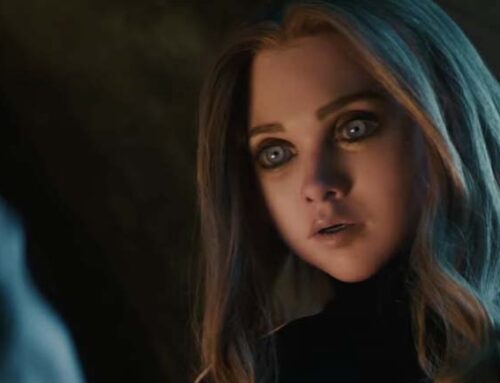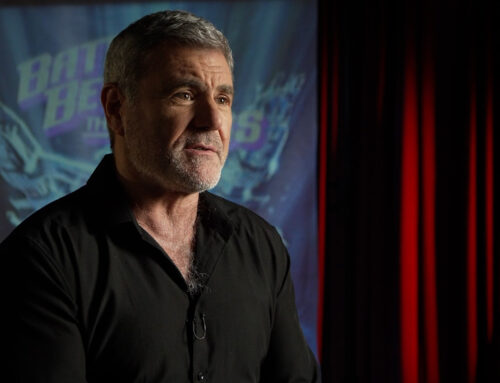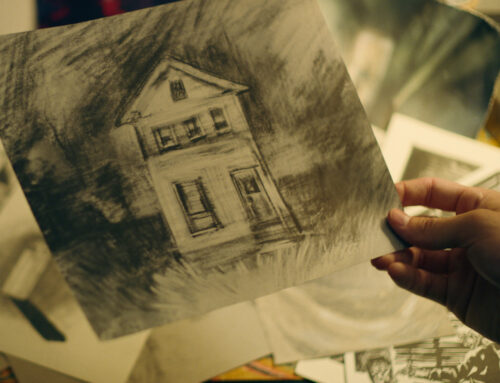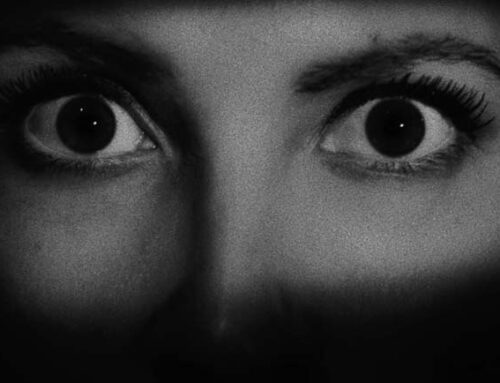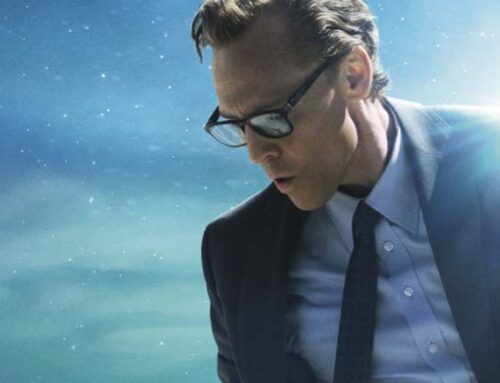On an amusing episode of The Simpsons, Krusty the Clown shows the audience “Eastern Europe’s favorite cartoon cat and mouse: ‘Worker and Parasite,’” and, after the odd, brief animation is over, he asks, “What the hell was that?” It is a throw-away joke, but behind it is the idea that popular culture from Communist countries would be incomprehensible to Americans. I was reminded of this moment, as someone who grew up in the eighties, fascinated by and a bit nervous about what happened behind the Iron Curtain, while watching Delta Space Mission.
Now, Deaf Crocodile has released a 4K restoration from the original negative of Romania’s 1984 animated science fiction feature Delta Space Mission. Deaf Crocodile’s publicity material notes that the film is, “An incredibly strange and strangely beautiful work of galactic eye candy,” and they are not wrong. It is strange, beautiful, eye candy, and after it was done I felt a little like Krusty. It would not be out of place as an opener for “Laser Floyd” at your local planetarium in the nineties. The trippy 80s synth score by Calin Ioachimescu simply adds to the flavor and strange beauty. The animation style might be summarized as “Ralph-Bakshi-meets-Peanuts-with-a-little-Hannah-Barbera-thrown-in.”
Set in the year 3084, Earth has prepared “Delta” – a massive space ship to explore the universe that’s controlled by a “super brain” computer. The crew consists of Dan (maybe the leader? Who knows?), Oana, Yashiro, and Anuta, a multi-ethnic crew from Earth, joined by Alma, “an intergalactic reporter from Planet Opp” and her “alien dog” Tin. In many ways Alma and Tin are the center of the story. Tin more resembles a beige frog than an dog, with two legs, a prehensile tail, and a mischievous attitude. He also eats metal, which is both the bane and savior of the crew.
The crew of Delta is going to “Cosmos,” a “strange troubled world.” Alma’s pod ship crashes on Cosmos, and Dan and Yashiro go to rescue her. The native population of cosmos consists of small robots and goofy swamp creatures (green frog ducks?) that view Tin as a kind of ball to be played with. Alma fights sentient vines, robots and the environment until she meets up with Dan and Yashiro, whose ship has now melted. They must rescue Alma’s pod and escape. We then learn that all this happened because the “super brain” computer is in love with Alma and wants to be with her forever. Faster than you can say Demon Seed, she explains that she just wants to be friends and superbrain grows confused and shuts down. The ship is then free to explore the galaxy.
At least I think that’s what happened.
An expert on Romanian culture would no doubt point out a number of references to Romanian culture, politics and history. Much science fiction from the Soviet bloc contained coded criticisms. Indeed, science fiction itself was often frowned upon, as the dominant narrative mode in the Soviet bloc was socialist realism. Thus absurdism and speculative fiction became means by which one might criticize that which could not be criticized. The film is also fascinating in that while the main characters are Romanian, one sees a multiethnic crew of the Delta. Yoshiro is Japanese and Anuta appears to be of African origin. This is Star Trek: Bucharest, remarkable for 1984, when the largest issue was whether or not Romania would participate in the Los Angeles Olympics, and indeed became the only Eastern bloc nation that did after the United States boycotted the 1980 Olympics in Moscow.
Which is all to say, Delta Space Mission can be watched on its own merits, but has even more appeal and interest as a museum piece – a glimpse into a past which those of us in the west were not allowed to see until now. For that alone, it is fascinating. It might not be great animation, but you cannot look away. Plus Tin is kinda cute and fun.
10 out of 10 (For Cultural Value)
| Delta Space Mission | ||
| RATING: | NR |
|
| Runtime: | 1 Hr. 8 Mins. | |
| Directed By: | ||
| Written By: | ||

